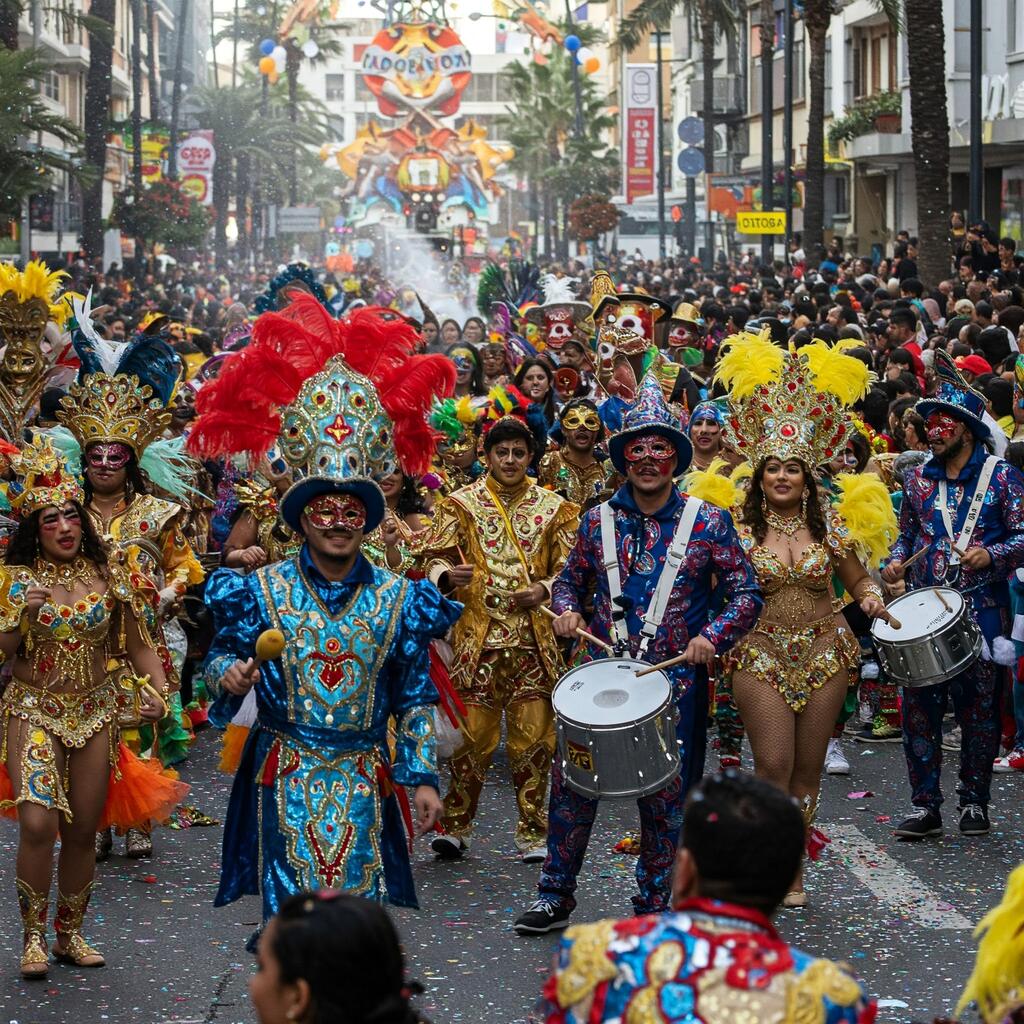
Carnival: The Craziest, Most Fun Time of the Year
We are in the middle of the carnival period, and in many countries and cities around the world, events related to this period are multiplying. Carnival is celebrated in many parts of the world in sometimes very different ways and events.
Carnival has very distant origins. The carnival period in the Christian religion precedes Lent, which as the name implies is a 40-day period preceding Easter. During the period of Lent in ancient times, people practised a lot of fasting, not eating meat and processed foods, so they prepared for this sad period with lavish banquets and celebrations lasting several days.
The actual days of carnival run from Thursday to Tuesday of the following week and these days are called Shrove Thursday and Shrove Tuesday. Shrove Tuesday is the last day of carnival. Since the eighth century, it was customary to wear a mask over one's face, social orders were subverted and wearing a mask led people to behave as they would not in everyday life.
But carnival has even more distant and pagan origins. In ancient Rome, the Lupercali were celebrated in February to wish for a fruitful and fertile new year.
After the history, we now turn to the craziest, most beautiful, most unconventional carnivals in the world.
The most famous carnivals are the carnivals of Nice, Venice, Viareggio, Barcelona and Madrid, and Rio De Janeiro. In addition to these, there are somewhat peculiar and strange carnivals in various parts of the world. One of these is in Italy, the Ivrea carnival.
The Ivrea carnival is one of the oldest in Italy and still preserves a centuries-old tradition, the battle of the oranges. There is a parade of floats, on top of each float there are men in padded clothes, with terrifying leather masks with iron grilles to repair their faces.
They are the ‘orangeries’, who have on their carts a good deal of oranges to throw at the orange pickers on foot, who have no protection to shield them from the blows of those on the carts.
The latter, outnumbered by those on the carts, have open costumes in front so that they can carry a more or less large supply of ammunition to throw at those on the carts. When they run out of supplies, they do not hesitate to pick up and throw what they find on the ground.
This battle takes place on the last three days of carnival, in the afternoon, and attracts a good number of tourists, who are protected by high nets placed along the procession route, since not a year goes by that some orangery worker does not have to be treated in the emergency room.
It should be noted that the oranges used for the battle are of a variety that is not good for eating and that everything left over from the battle, i.e. the remains of the oranges, are used as fertiliser.
The longest carnival of the year takes place in Uruguay, lasting for forty days. Dancers in eccentric and colourful costumes romp through the streets of Montevideo, in a carnival that has nothing to envy from the more famous one in Rio de Janeiro. The processions move to the rhythm of Candombe, punctuated by the sound of African drums.
The funniest carnival is that of Torelló in Spain. There is much chaos and heavy drinking, especially during the men's and women's day, when roles are swapped and men parade through the streets dressed as women, even in very skimpy clothes.
Also in Spain, up north, the carnival of Avilès is well known, where the party really flows, given the amount of foam that floods the streets and squares of the city.
On the other hand, a rather strange carnival takes place in Belgium in the town of Binche. On Shrove Tuesday, it is traditional for the men of this town to wear a mask called Gilles. So what is strange about this carnival is that hundreds and hundreds of masks are all the same. This mask can only be worn in this town and only on Shrove Tuesday.
Beautiful to see is the Nice carnival, famous for its floats full of flowers that are thrown into the crowd by masked girls. These floats are true works of art built with flowers. In the parades, there are also floats inspired by particular themes. This year's parade is inspired by the theme of cinema. The floats will parade to the beat of street performers and bands from all over the world.
One of the most famous carnivals is that of Viareggio in Italy. This carnival is characterised by huge papier-mâché allegorical floats, some as high as twenty metres. These floats are often satirical, inspired by current events with caricatures of politicians and show business personalities.
These mammoth floats are prepared over months of hard work and each city district has its own. Also very characteristic are the ward carnivals that take place on the Saturday night before the parades.
The most classic and serious carnival is that of Venice. Here the art of masquerade reaches sublime levels. Strolling through the calli and alleyways on the city's canals, one encounters ladies and knights in sumptuous, colourful costumes.
The incognito that disguise gives you is the very essence of carnival. All you need is a costume and a mask and you free yourself from prejudices and your own habits. By concealing one's identity, one frees oneself of belonging to social classes, gender, religion.
The Venetian festival on the water attracts many tourists, where a parade of boats on the Rio di Cannaregio amazes thousands of tourists and visitors with colourful structures and beautiful masks. This festival starts on Saturday evening and continues on Sunday morning with parades on the canals.
Not to be missed in this roundup is the world-famous carnival in Rio de Janeiro, where groups of dancers in skimpy costumes are the main spectacle. And the music, the samba, is the king of this celebration.
The Rio carnival is celebrated over five days from Friday to the following Tuesday, called Shrove Tuesday. It is described by many as the greatest spectacle in the world.
Until about 30 years ago, the carnival took place in the streets, then due to the amount of tourists this event attracted, the sambometro was built. It is a kind of immense stadium that can hold up to 80,000 people plus the 30,000 or so participants who perform on the track.
There are twelve samba schools in the city of Rio and each of them puts on a unique show with sensual, dazzling costumes to the enthralling sound of the samba. Each school also has floats and incredible sets. A panel of forty judges carefully observes each school's performance to determine the winner, who will be announced on Ash Wednesday.
Carnival, however, remains and always will be the festival of happiness, light-heartedness, freedom, and you too can be whoever you want to be for a few days or an evening in a world without prejudices, all because of a mask you put on your face and that allows you to be different and, if you like, a little crazy. But that's the beauty of carnival.






















